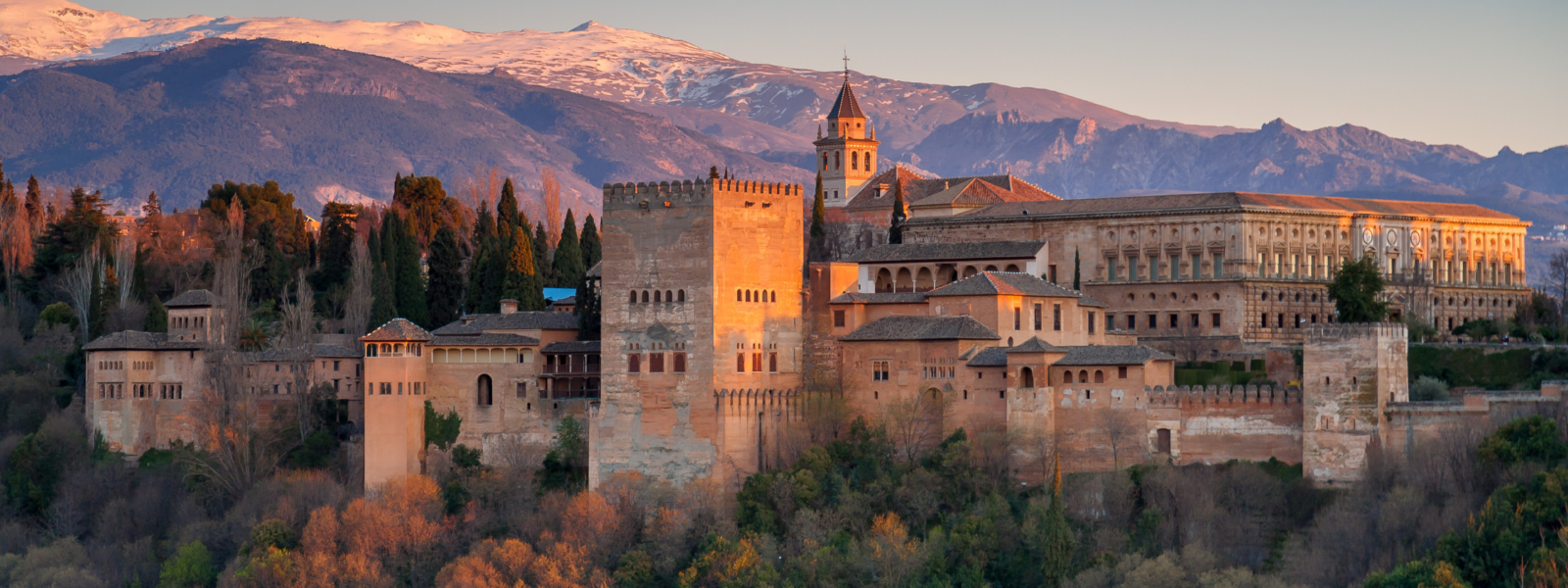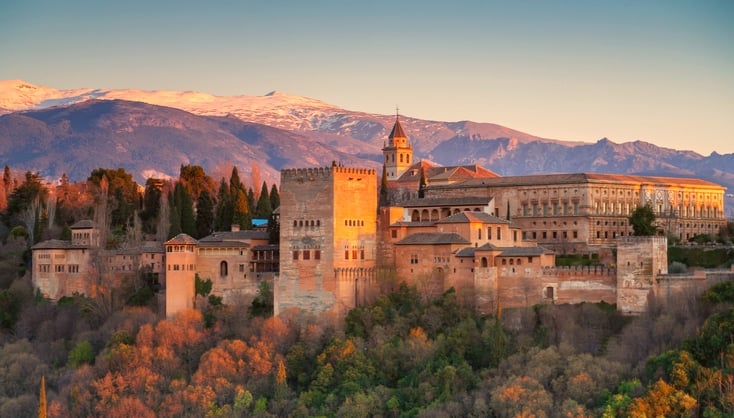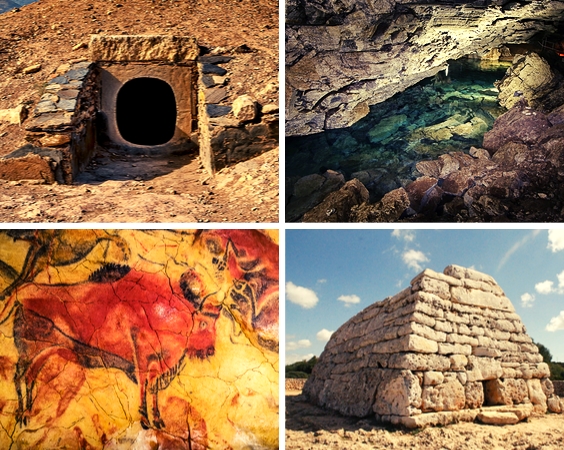

Top 4 Historic Destinations to Discover in Spain
Sure you’ve heard about, or even visited the beaches in Spain: Costa del Sol, Costa Brava, the Mediterranean sea, never-ending parties… But Spain is more than just sand and sun! Spanish history can be revisited at any time, and every city is a different chapter.
From Phoenicians to Greeks, to Romans and Arabs, Spain’s history is the result of different cultures and civilizations. Today in LuggageHero we present you the must-visit list of places you can’t miss when traveling to Spain.
Discover Malaga
There’s a chance that you’ve already traveled to Malaga and enjoy its beauty. But did you know that its first name was Malaka? Back in the day, Malaka was a Phoenician colony in the 4th century BC. Later came the Carthaginians, followed by the Romans in 237 BC. Malaga was surrounded by the walls the Arabs built after that and renamed it Mālaqa. These walls were so strong, that Malaga’s siege by the Catholic Monarchs was one of the longest in the Reconquest, in 1487.
Malaga’s Phoenicians settlements can still be found in the basements of different buildings, like Museo Picasso, or Malaga University, among others. Malaga’s Alcazaba should be on your list as well. The word “alcazaba” comes from the Arab word al-qaṣabah. And it is basically a wall fortification inside a city, used as the main residence of the governors.
To discover Spain, we recommend you to visit:
- The Roman theatre, built in the 1st century BC, promoted by the emperor Augustus. Later, in the mid 8th century AD, the Moors used the stones to build their homes, and later on the Alcazaba.
- Dolmen of Antequera, a megalithic burial, and the largest known ancient structure in Europe. It dates from 3750-3650 BCE.
- Phoenician’s wall remains, preserved in Palacio de Buenavista (Museo Picasso de Malaga), between Cister and San Agustin streets, and the Rectorate of the University of Malaga.

Discover Granada
Francisco de Icaza, a Mexican poet, once said that there is no greatest sorrow than being blind in Granada. This city has been populated since 5500 BC, at least, with Roman and Visigothic influences. Nevertheless, the major influence that Granada experienced was with the Arabs in 711. The Nasrid dynasty’s influence in Granada was the greatest of them all, ruling Granada from 1230 until 1492. The Nasrid left us with the beautiful Alhambra, Qalat al-Amra, “The Red Castle”, the greatest exponent of Nasrid art.
You can also visit the Calderería Nueva street, better known as “Calle de las Teterías” (“The Tea Shops street”). You can find this beautiful street in the Albaicin district, in the oldest part of the city. Here you would experience and enjoy the Arab culture. Visit some tea shops, artisan workshops, or just get yourself lost wandering around and falling in love with Granada.
Discover Spain – What to visit while in Granada ?
- San Nicolas Pointview, to enjoy the sight of the Alhambra and Sierra Nevada.
- The Walk of the Sad (Paseo de los Tristes, Albaicin), the most pintoresque area of the Albaicin disctrict.
- Palace of Charles V, a Renaissance building that was commanded to be built near the Alhambra palaces by the monarch. Interestingly enough, no monarch lived there ever, and the building didn’t have a roof until 1957.

Destination Toledo
The city owns its name to Latin historian Tito Livio, who mentioned Toledo as “Totelum”, meaning raised up high in Latin. Also, Toledo was the capital of the Visigothic Kingdom in 513, and the seat of the Church of Spain in the 7th century. Walking around Toledo feels like you just got into King’s Landing or a medieval village.
This city is best known for its steel and its sword making. It was the center of steel working since 500 BC, used by the Carthaginian general Hannibal used it in the Punic Wars in 218 BC. It was also the host city for the painter, sculptor, and architect “The Greek” (Doménikos Theotokópoulos). He created his best works while in Toledo.
What to see in Toledo:
- Roman circus, which you can find in Vega Baja. Built in the mid 1st century, it was used until the 4th century.
- The Alcazar, located in the highest part of Toledo. This fortification had to be restored between 1939 and 1957, after the Siege of the Alcazar during the Spanish Civil War. Previously, during the 3rd century, it was used as a Roman palace and restored under Charles I and Philip II of Spain in 1540.
- San Juan de los Reyes Monastery, a gothic and Isabelline gothic Franciscan monastery, built by the Catholic Monarchs in 1477 and completed in 1504

Discover Barcelona
Barcelona started as an Iberian settlement called Barkeno, but its early origins are unclear. There is proof that takes us to the Neolithic and Chalcolithic periods: a settlement excavated in El Raval dates earlier than 5000 BC. During the Roman occupation, Barcelona was known by the name of Barcino, and the first Christians communities kept that name. The Visigoths named her Barchinona, and the Muslims, Barshiluna, when they arrived in 711.
If you’re visiting Barcelona, some places you can’t miss are the gothic Cathedral (1339) and Santa Maria del Mar basilica (1383), and the Gothic Quarter. If you want to go further in the past, you can visit the Roman ruins:
- Via Sepulcral Romana (Roman Burial Ground). Where can you see it: Plaça Vila de Madrid.
- Porta Praetoria, door to Augusta Praetoria, built in 25 BC. Where you can see it: between via Sant’Anselmo and via Porta Praetoria
- Temple of Augustus, built during the Imperial period. At some point, the temple was demolished. Its ruins weren’t discovered until the 19th century.

Discover Spain – A little extra something to:
- Atapuerca (near Burgos), with proof of the earliest human beings in Europe, nearly one million years ago! In the excavation of 1997, remains were discovered of humans that lived 800,000 years ago.
- Los Millares (Almeria), considered the most important site in Europe from the Copper Age (3200-2200 BC).
- Cave of Altamira, (Cantabria), known by its prehistoric parietal cave art. The earliest paintings that can be found are dated during the Upper Paleolithic, 36,000 years ago.
- Naveta des Tudons (Menorca), 1000 BC, megalithic chamber tomb. A naveta is an unique edification, only found in Menorca.

Level up your holidays from the basic beach-and-sun trip!
If you decide to visit Spain, consider visiting these destinations to add some History to your holidays! Above all, enjoy your journey in Spain. And don’t forget to check LuggageHero where you can leave your luggage for a hands-free, easier trip!
And remember, we have an app to make everything even easier!









